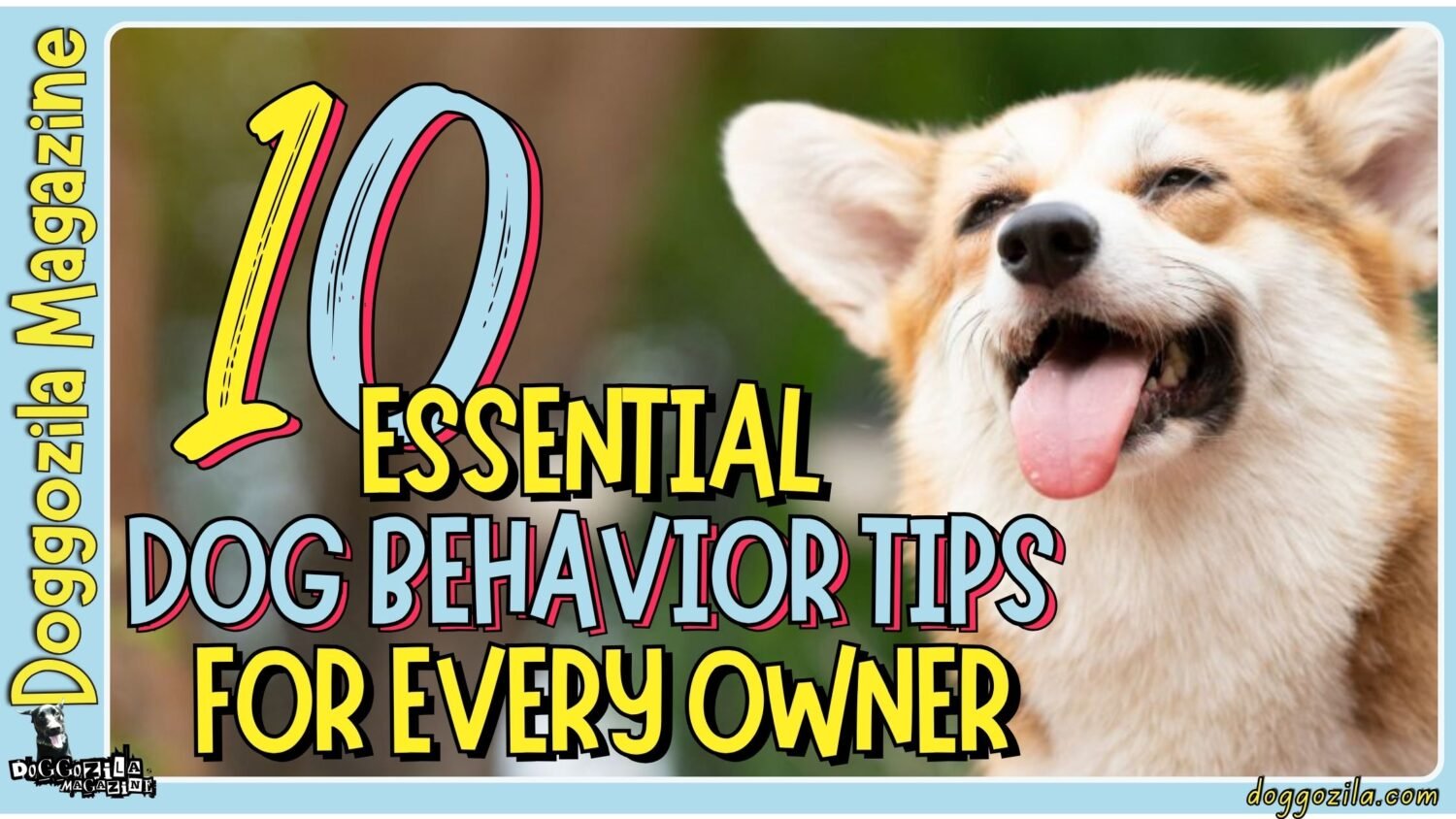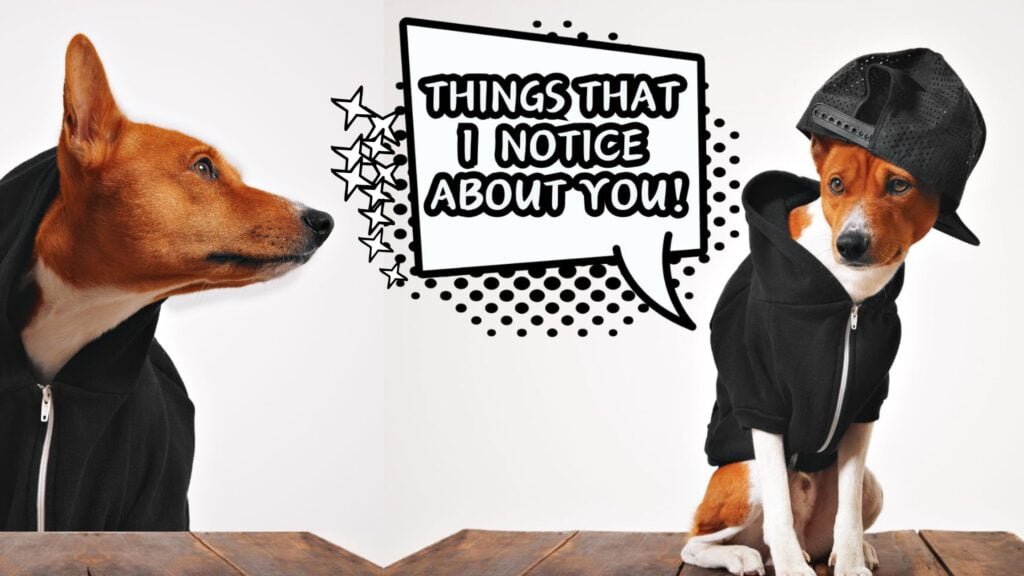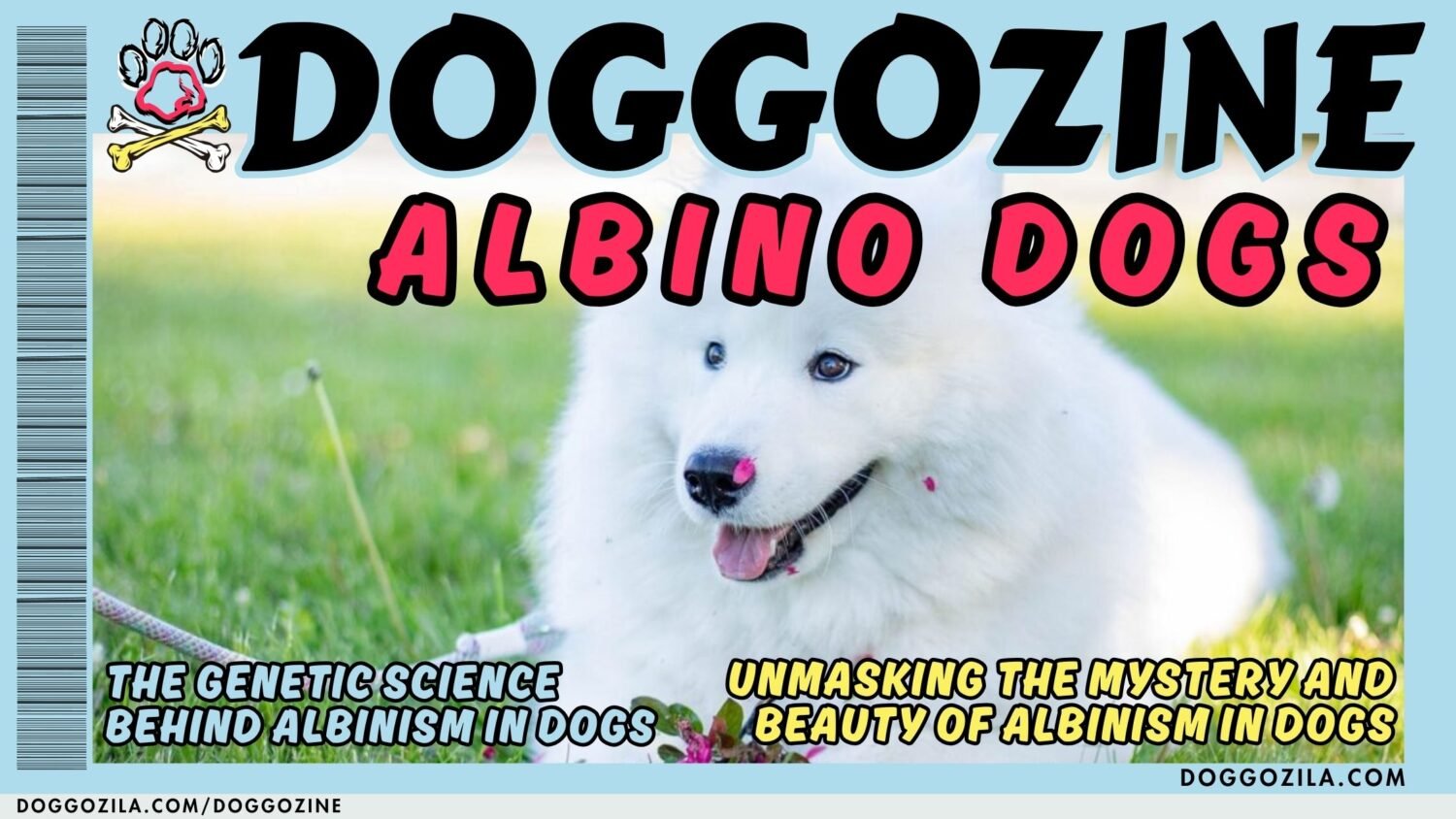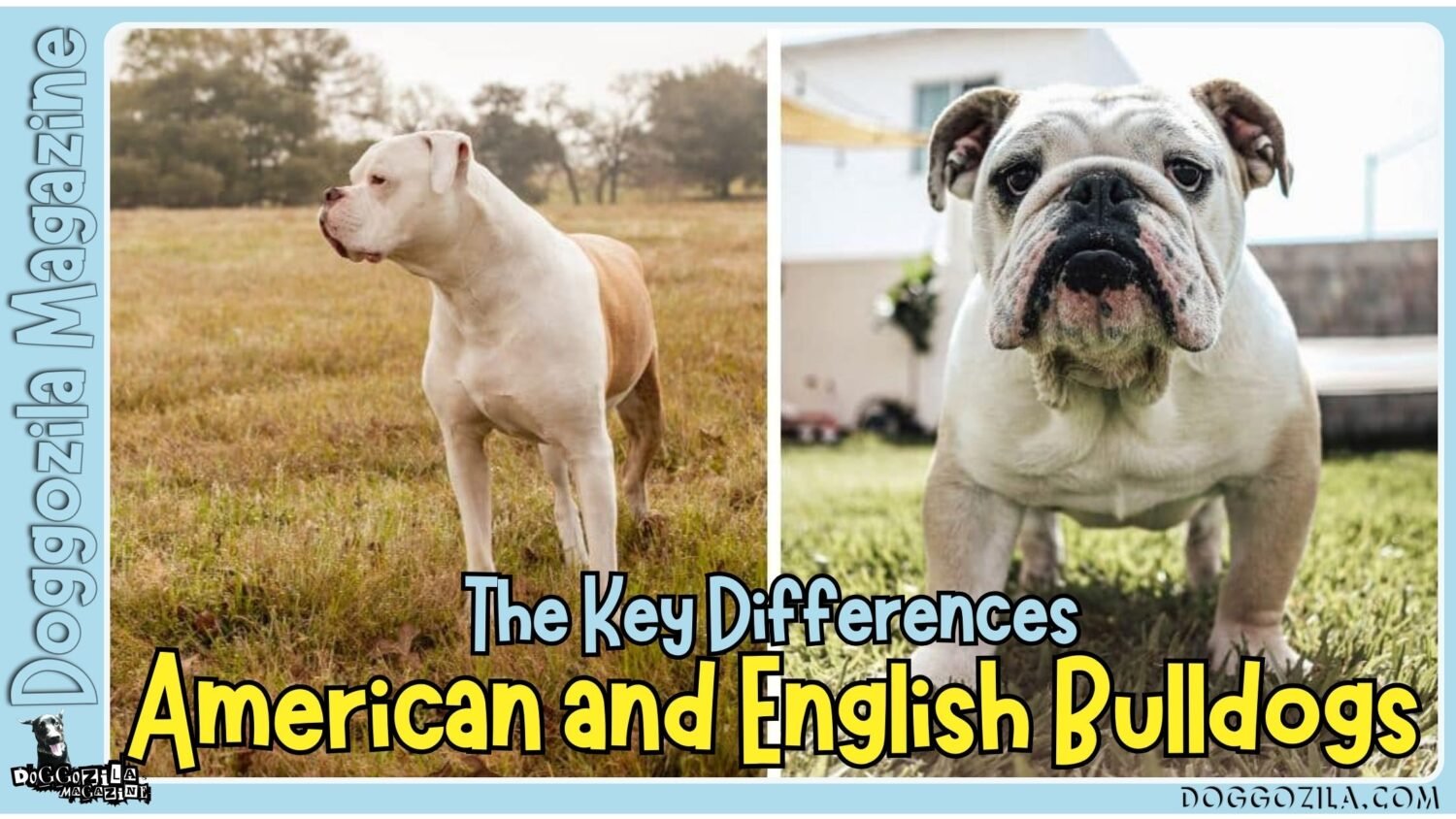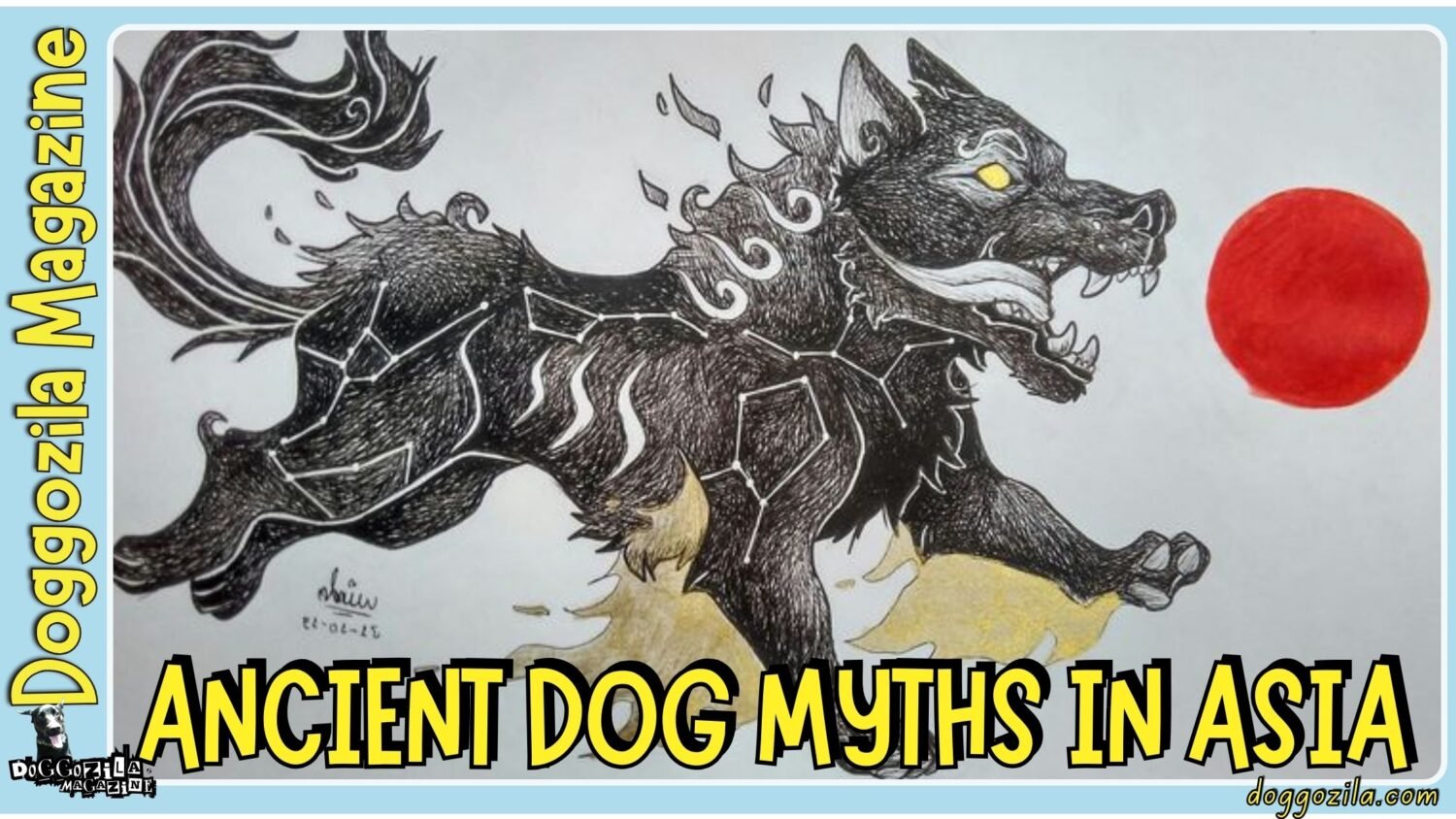Beyond alarms and cameras, the best dogs for protection blend unwavering loyalty with intelligent threat assessment, turning everyday anxiety into profound confidence. These loyal furry guardians don’t merely defend property, they sense your unease during midnight walks, stand sentinel over sleeping children, and create invisible shields of security through their mere presence.
All of the dogs raised or trained for protection include heightened self-assurance and they are the best for day-to-day peace. These canine sentinels blend loyalty, careful observation, and a deep bond that can transform nervous nights into restful slumber.

MORE THAN MUSCLE: THE HEART BEHIND THE BEST DOGS FOR PROTECTION
True dog protection isn’t about aggression, it’s about discernment. Research into working dogtemperaments reveals elite guardians like Belgian Malinois and Dobermans possess neurological wiring for situational threat analysis. Unlike reactive breeds, they process variables, for example their thoughts might be like, “Is this delivery driver routine? or Does that stranger’s body language suggest malice?“ This cognitive evaluation paired with breed-specific traits like territorial awareness or noise sensitivity creates layered security.
Studies of military K-9 units show these dogs activate differently to gunfire versus fireworks, proving they don’t just react, they analyze. The magic lies when this vigilance coexists with gentle nudges for belly rubs, making them both fierce protectors and loving companions.
New Owners Guide: Unpacking The Best Training Insights for Protection Dogs
Effective protection dog training is about more than teaching “sit” and “stay”, it’s a journey that hones critical thinking and reinforces leadership in both dog and handler. Many people start by searching for dog training near them, only to discover how specialized protection programs emphasize impulse control and situational awareness.
Trainers typically use positive reinforcement to encourage calm decision-making, rewarding dogs for pausing rather than lunging. This approach not only shapes reliable guard behaviors but also solidifies the owner’s role as a confident pack leader. Early sessions often incorporate basic obedience drills alongside real-world distractions: passing bicycles, ringing doorbells, even busy dog parks.
Over time, advanced exercises simulate security breaches, teaching dogs to respond with controlled deterrence rather than uncontrolled reaction. For new handlers, this structured progression builds practical skills in de-escalation and quick assessment, lessons that naturally extend into everyday crisis management.
Real-Life Project with a Case Study from a Security Firm About Their Best Protection Dogs
In a suburban community just outside Chicago, a small security company partnered with a dog trainer to introduce K9 patrol units to residential neighborhoods. Homeowners reported seeing the best of benefits from the protection dogs, and how they manifested within days, reduced break-in attempts, fewer wandering teens in the cul-de-sac, and a newfound sense of neighborhood vigilance.
A case study comparing crime data before and after the program showed a 40 percent drop in suspicious activity calls, illustrating how trained dogs deter mischief before it escalates. Residents described routine morning walks with their dogs as bonding rituals that doubled as daily safety patrols. Even local teens admitted feeling less inclined to trespass when they heard a well-trained German Shepherd bark.
The project’s success inspired neighboring towns to replicate the model, demonstrating that community-driven protection dog initiatives can scale quickly when results speak for themselves. This hands-on partnership proved that dog-centric security isn’t just an individual perk, but a collective asset in fostering safe neighborhoods.
Why The Best Benefits of Dogs for Protection Include Tactile Bonding and Family Adventures?
When a protection dog learns to respond on command, families discover that the benefits of the best dogs for protection go beyond deterrence to include thrilling outdoor experiences. Weekends transform into spontaneous adventures like hiking along dog-friendly trails, practicing obedience in open fields, or exploring new pawsome routes with a reliable dog guide.
The structured nature of protection dog training means these dogs excel at obstacle courses, jumping through agility hoops or weaving between poles, making every outing an interactive play session. Children often become co-trainers, tossing treats for precision recalls or practicing hand signals in the backyard.
Over time, cliffside walks, river banks, and forest paths become familiar playgrounds where both dog and handler sharpen their reflexes and trust. This tactile bonding, staking out safe zones together, rescuing a wayward tennis ball, or simply sharing quiet moments at sunset, cements the partnership in a way that pure security cannot.
🔑 Key Points: A Chicago-area security firm introduced K9 patrols in a suburban neighborhood, leading to a 40% drop in suspicious activity. Residents reported increased safety, proving that well-trained protection dogs deter crime while fostering community vigilance.

BREED BREAKDOWN: WHICH ARE THE BEST DOGS FOR PROTECTION?
When exploring the best dogs for protection, it’s crucial to understand that breed traits directly influence a dog’s guarding capabilities. Breeds like German Shepherds and Rottweilers possess innate instincts honed over centuries, combining intelligence, loyalty, and physical prowess.
These natural guardians don’t just bark at strangers, they assess threats, protect family members, and create environments where owners feel genuinely secure. Choosing from the best dogs for protection means matching their energy, trainability, and temperament to your lifestyle for a harmonious partnership.
Why German Shepherds Top the List for The Best Dogs for Protection
Walk onto any military base or police K-9 unit, and you’ll witness German Shepherds executing complex protection tasks with intense focus. But what makes them equally suited for suburban homes? It’s their unparalleled versatility. Bred for herding, their DNA wires them for anticipating threats to their “flock“, whether sheep or children.
With a bite force of 238 PSI and intelligence ranking among the top three breeds, they learn commands in under five repetitions. Unlike purely aggressive dogs, a well-socialized Shepherd distinguishes between the mail carrier and an intruder scaling your fence.
There is such story about a neighbor’s rescue GSD, called Luna, she always play gently with toddlers yet instantly freeze when a stranger approached too quickly toward her owner. Their double-layered loyalty like emotional bonding paired with instinctual duty creates the gold standard in protection companions.
The Elite Belgian Malinois: The Best Dogs for Protection in High-Stakes Situations
Weighing 25% less than German Shepherds but with explosive athleticism, Malinois dominate elite protection work. Their signature traits, a 30 mph sprint speed, 8-foot vertical leap, and obsessive focus, make them favorites for Navy SEAL teams and presidential security details.
Unlike bulkier breeds, their lean frames excel in agility-based threats, intercepting moving vehicles or navigating dense urban terrain. But this intensity demands expertise. A trained Malinois named Kato required 90-minute daily “mission simulations“, bite sleeve drills combined with scent tracking, to prevent destructive boredom.
For active handlers, they’re phenomenal partners, for couch-bound owners, they’re overwhelming. Their high-drive temperament thrives on structured challenges, making them less “pets” than full-time protection partners.
Related Article Recommendation: The Seven Dog Groups: Classifying Dogs
Powerhouse Protector: The German Shepherd Belgian Malinois Mix
For those seeking elite protection with versatile companionship, the German Shepherd Belgian Malinois mix (often called a Shepinois or German Malinois) represents a powerhouse hybrid. This crossbreed merges the German Shepherd’s steadfast loyalty and situational discernment with the Malinois’s explosive agility and work ethic, creating a dog that excels as both a family guardian and performance partner.
Typically weighing 65–85 lbs with a fawn, mahogany, or black-tipped coat, they inherit the Malinois’s compact athleticism and the Shepherd’s intelligent gaze, resulting in a striking yet functional appearance. Their temperament balances the Malinois’s intensity with the Shepherd’s level-headedness, making them less prone to overreactivity while retaining formidable protective instincts, ideal for owners who need reliability without constant high-drive management.
Early dog socialization and advanced training are non-negotiable, as their herding heritage may manifest as heel-nipping or suspicion of strangers, but their eagerness to please ensures rapid skill mastery. Though they thrive in active homes with space to patrol, their emotional intelligence fosters profound bonds, turning every hike, training session, or quiet evening into a shared mission of trust and vigilance.
The Gentle Rottweiler: Unshakeable Loyalty Defines The Best Dogs for Protection
Rottweilers embody a fascinating duality, 328 PSI bite force capable of disabling threats, yet renowned for their patience with children. Historically, they guarded butchers’ money belts, learning discernment between customers and thieves. Modern “Rotties” retain this situational awareness.
During a 2023 Oregon home invasion, a family’s Rottweiler held an intruder at bay without biting, using only intimidating presence until police arrived. Their protective strategy prioritizes intimidation over attack, making them superb deterrents. Training is non-negotiable; their strength requires early socialization.
Focus on impulse control exercises like “place” command reinforcement and desensitization to strangers. Properly guided, they transform into steadfast shadows that project calm assurance during neighborhood strolls or unfamiliar situations.
🔑 Key Points: The best protection dogs, like Belgian Malinois, Rottweilers and Dobermans, combine intelligence with situational threat assessment rather than blind aggression. Their ability to analyze threats such as differentiating between a delivery driver and an intruder makes them elite guardians.

BEYOND THE USUAL SUSPECTS: UNEXPECTED PROTECTORS
Protection isn’t exclusive to traditional guard breeds. Lesser-known dogs like Bullmastiffs and Giant Schnauzers offer exceptional security through unique strategies, silent surveillance or vocal alertness. These breeds prove that effective protection dogs prioritize discernment over aggression, making them ideal for diverse households.
Researching the best dogs for protection often reveals surprises, compact breeds or reserved personalities can deliver formidable deterrence through confidence and training, expanding options for urban dwellers or families seeking subtle vigilance.
The Silent Bullmastiff: Low-Profile Vigilance Among The Best Dogs for Protection
Imagine a 130-pound shadow materializing soundlessly between you and a threat. That’s the Bullmastiff specialty. Bred by 19th-century English gamekeepers to silently tackle poachers, they operate on stealth intimidation. Unlike bark-centric breeds, Bullmastiffs conserve energy, observing intruders until close enough to physically block or pin without biting.
Their low-energy temperament suits apartments or quieter homes, one dog trainer said that a Bullmastiff, called Bruno, spends 18 hours daily napping yet intercepted a porch thief within seconds. Their deep-bone resonance bark, deployed sparingly, carries startling authority. Training should emphasize controlled deterrence over aggression, their size alone usually suffices.
The Giant Schnauzer is Alert Strategist: Why Intelligence Matters for Best Protection Dogs?
Giant Schnauzers, resembling bearded sentinels combine terrier tenacity with analytical intelligence. Originally Alpine cattle guardians, they excel in pattern recognition, memorizing regular visitors while flagging anomalies. Their wiry coat and imposing stature (up to 95 pounds) create visual deterrence, but their true strength is vocal alertness.
Unlike silent watchers, Schnauzers deploy sharp, persistent barks that escalate with threat proximity. Mental stimulation prevents neurotic barking, advanced obedience or scent work channels their focus. A 2024 study found them among the top five breeds for differentiating between benign and threatening strangers. Their versatile adaptability shines in urban settings where space is limited but vigilance is paramount.
The Triple-Threat Guardian: Mixed Breed with German Shepherd, Dutch Shepherd and Malinois
Bred by elite protection kennels like Svalinn Dogs, this hybrid combines three legendary working lines into one formidable guardian. The mix leverages the German Shepherd’s family loyalty, the Dutch Shepherd’s calm confidence, and the Malinois’s razor-sharp drive, creating a dog with unparalleled situational adaptability.
Typically weighing 65–90 lbs, they exhibit brindle, black, or fawn coats often with athletic Dutch Shepherd markings or a Malinois’s sleek silhouette. Unlike single-breed protectors, their hybrid vigor reduces inherited health risks while amplifying traits like environmental discernment and handler focus.
Ideal for high-risk professionals or rural homesteads, they excel where threat assessment requires both composure and explosive response capability. Early socialization ensures their protective instincts activate only when true danger arises, making them sophisticated partners rather than reactive guard dogs.
🔑 Key Points: Breeds like mixed Shepherds breeds, Bullmastiff and Giant Schnauzers excel in protection due to their intelligence, loyalty, and physical abilities. Matching a dog’s energy and temperament to your lifestyle ensures a harmonious and effective guardian.

THE BEST DOGS FOR PROTECTION OF FAMILIES
Families need protectors who balance safety with gentleness. Breeds like Dobermans and Boxers excel here, offering vigilance without compromising their affectionate nature. The best dogs for protection in family settings intuitively differentiate between threats and playmates, shielding children while participating in daily adventures.
When evaluating protective family dogs, prioritize breeds with proven patience and adaptability, traits ensuring your guardian enriches home life rather than complicating it.
The Doberman Pinscher: Balancing Beauty and Brawn in Best Protection Dogs
Dobermans shatter protection stereotypes with their sleek aesthetics and emotional sensitivity. Bred by tax collector Louis Dobermann for personal safety, they evolved into velcro guardians attuned to owner emotions. Their sighthound-speed (30+ mph) and 305 PSI bite enable rapid threat response, while their intelligence allows nuanced commands like “watch” versus “release.”
Modern breeding reduced historic aggression, as an example of one Doberman, called Astra, who alerts to strangers with a low growl but greets the family book club with tail wags. Key to their success is avoiding isolation, they bond intensely and deteriorate without companionship. For active families wanting elegance plus security, they’re unparalleled.
The Boxer as Playful Protector: Family-Friendly Traits of The Best Protection Dogs
Boxers counterbalance muscular intimidation (75 pounds of lean muscle) with clownish antics, earning them the nickname “Peter Pan of dogs.” Historically tasked with guarding German estates, their protection style blends goofiness with gravity. They deter threats through vocal presence, distinctive “woo-woo” barks and impressive vertical leaps rather than immediate biting.
This theatricality often suffices, few intruders test a Boxer mid-bound. Their patience with children is legendary as they tolerate dress-up sessions yet position themselves between kids and strangers. Training leverages their food motivation, reward-based methods yield eager compliance. Ideal for suburban homes, they transform protection into interactive vigilance.
The Fluffy Sentinel: Chow Chow and Akita Mix (Chowkita)
Combining two ancient guardian breeds, the Chow Chow Akita mix (often called a Chowkita) creates a formidable yet dignified protector with unmistakable presence. This hybrid merges the Chow Chow’s legendary suspicion of strangers and deep-bone resonance bark with the Akita’s silent, analytical vigilance and physical power. Typically weighing 70–100 lbs with a dense double coat often sporting the Chow’s signature black tongue and the Akita’s bear-like stature.
They project an intimidating visual deterrent while requiring minimal dog grooming beyond weekly brushing. Their protective strategy prioritizes perimeter surveillance and vocal warnings over immediate aggression, making them ideal for suburban homes where controlled deterrence is valued.Unlike high-drive shepherds, Chowkitas conserve energy between threats, needing just 30–45 minutes of daily exercise, though mental stimulation through puzzle toys or scent work prevents stubbornness. Early socialization is non-negotiable!
Their inherent wariness requires positive exposure to visitors, children, and other pets to prevent over-protectiveness. Health-wise, they benefit from hybrid vigor but may inherit parental risks like entropion (Chow) or joint dysplasia (Akita), warranting vet checks for eye/hip health. For owners seeking a low-energy yet alert guardian who bonds intensely with family, this mix delivers unshakeable loyalty without demanding constant activity.
🔑 Key Points: Lesser-known breeds like Boxer and Doberman Pinscher offer unique protection styles, proving that discernment and confidence matter more than size or aggression. Compact breeds can also provide excellent security through alertness and training.

PROTECTION DOGS STRUCTURED TRAINING: THE CRUCIBLE OF RELIABILITY
Even the best dogs for protection require structured training to channel instincts responsibly. Protection training transforms raw potential into reliable skills through bonding, obedience, and scenario practice. Without guidance, natural guardianship can manifest as problematic reactivity.
Investing in professional guard dog training ensures your companion responds appropriately to real threats while ignoring harmless stimuli, turning genetic promise into trustworthy everyday security.
Training for Protection Dogs Near Me: How to Discover The Best Local Resources?
Finding the right “training for protection dogs near me” can be a game-changer for protection dog handlers who need specialized instruction beyond basic obedience classes. Many local clubs now offer dedicated K9 security workshops, combining estate patrol skills with everyday obedience drills. Trainers often provide trial sessions that let owners gauge compatibility between their dog’s temperament and the program’s teaching style.
These introductory classes might include bite sleeve demonstrations, search-and-retrieve games, and controlled escalation scenarios to test the dog’s response thresholds. Handlers learn to position themselves effectively, using body posture and voice modulation to guide the dog rather than relying on harsh corrections.
Local trainers typically recommend supplementary home exercises, daily mindset challenges that reinforce the dog’s protective instincts in familiar settings. Over weeks, these techniques create a seamless interplay of discipline and partnership, crucial for both residential defense and public appearances.
Best Guard Dogs Start With Trust: Building the Bond Behind True Protection
Protection without trust is just aggression. Elite trainers emphasize relationship-based defense, dogs act to preserve their human pack, not from innate hostility.
Start with engagement exercises:
- Eye contact drills reward check-ins during play
- Hand-feeding meals builds positive association
- “Nothing in life is free” protocols teach calm compliance
Schutzhund champions like the Rottweiler Thor didn’t excel through compulsion, his handler used toy rewards to associate protection with joy. This foundation prevents dangerous misunderstandings, dogs shouldn’t guard resources (food, couches) but people.
How to Integrate Best Reinforcement Methods When Training Protection Dogs?
In modern protection dog programs, positive reinforcement has replaced outdated harsh-correction models, leading to happier dogs and stronger handler-dog bonds. By rewarding desired behaviors with treats, toys, or praise, trainers teach dogs to anticipate rewards rather than avoid punishment.
This approach encourages eager participation in drills like target holds or non-lethal threat suppression, as dogs learn that appropriate restraint earns positive outcomes. It also addresses common issues such as over-excitement or obsessive guarding by channeling energy into structured tasks.
Handlers observe that dogs trained with reward-based methods exhibit fewer stress signals like less yawning, licking lips, or stiff postures, during real-world engagements. Positive reinforcement also extends to handler faults: when an owner fumbles a command, the trainer guides them to correct body language rather than scolding the dog. This mutual feedback loop fosters clarity, reducing training plateaus and ensuring that protection skills remain sharp and reliable.
Socialization is The Discernment Catalyst: Sharpening Judgment in The Best Dogs for Protection
A protection dog’s value lies in differentiating “threat” from “guest.”
Controlled exposure prevents reactivity:
- Structured walks past schools/busy parks
- “Meet and greets” with uniformed personnel (mail carriers, firefighters)
- Crate conditioning for calm confinement during gatherings
The Belgian Malinois Cairo, deployed with Secret Service, trained using positive scenarios, playing with kids near monuments to avoid associating crowds with threats. Socialization isn’t neutrality, it’s contextual awareness.
Balancing Socialization and Guarding Instincts to Reduce Dog Reactivity
A well-rounded protection dog must excel at guarding without becoming needlessly reactive to benign triggers like joggers, delivery workers, or neighborhood pets. Balancing socialization and instinct involves gradual exposure to varied stimuli such as car horns, street festivals, even vacuum cleaners, while reinforcing calm responses.
For example, trainers might stage a mock backyard party where the dog learns to remain relaxed despite music, guests, and buffet tables. Each positive experience expands the dog’s tolerance, ensuring they only focus on genuine threats.
Owners also practice cue-based redirection, teaching the dog to disengage from mundane distractions on command. Over time, this reduces false alarms and provides neighbors with confidence in the dog’s reliability. Consistent socialization schedules like weekly park visits, supervised puppy meet-ups will help maintain this balance throughout the dog’s life.
🔑 Key Points: Protection dog training focuses on impulse control and situational awareness, using positive reinforcement to encourage calm decision-making. Structured sessions incorporate real-world distractions, teaching dogs to respond with controlled deterrence rather than aggression.

BEYOND BEST GUARDIAN DOG BREEDS: THE SECURITY AND PROTECTION MINDSET
Finding the best dogs for protection transcends pedigree. Smaller breeds and rescued mixes often exhibit extraordinary courage and alertness, proving size and lineage aren’t everything. A terrier’s piercing bark or a shelter mutt’s situational awareness can deter intruders as effectively as larger breeds.
Cultivating a protective mindset through training and bonding unlocks potential in unexpected candidates, making security accessible to all dog lovers.
Small But Mighty: Unexpected Candidates for The Best Dogs for Protection
Size ≠ Security!
Vocal deterrents like Miniature Schnauzers or Dachshunds boast fierce territorial instincts, their piercing barks alert owners while unnerving intruders. Boston Terriers, despite their tuxedo elegance, historically fought in pits, modern descendants retain courage during confrontations.
Training focuses on boundary awareness, teaching small dogs to alert from designated “watch spots” rather than charging doors. For apartments or frequent travelers, these compact sentinels deliver formidable awareness without space demands.
Hidden Potential of Rescue Guardians: Adopting The Best Dogs for Protection
Shelter mutts often possess hybrid vigor ideal for protection.
What to look for:
- Alert posturing (raised ears, still tail) at kennel noise
- Confidence approaching strangers without fear
- Toy drive (shows reward motivation)
Anecdote: A rescue Boxer-mix, Duke, alerted to a gas leak by frantically pawing the stove, a skill never formally trained. His unknown lineage combined herding vigilance with terrier tenacity. Dog DNA tests often reveal guardian breeds like Mastiff or GSD in “mystery mixes,” unlocking innate aptitudes.
🔑 Key Points: Even the best protection dogs require structured training to refine instincts into reliable skills. Professional guidance ensures they respond appropriately to real threats while ignoring harmless stimuli, making them trustworthy guardians.

LIVING WITH GUARD DOG PROTECTOR: HARMONY & VIGILANCE
Integrating the best dogs for protection into daily life requires intentional cohabitation strategies. Establish clear routines for “on-duty” alerting and “off-duty” relaxation to prevent burnout or over-vigilance.
Enrichment activities like scent games for dogs or patrol walks keep their skills sharp while reinforcing your bond. This balance ensures your guardian remains a contented family member while excelling as your home’s silent sentinel.
Integrating Guardians With Families: Daily Life With The Best Dogs for Protection
Protection breeds thrive on structured integration:
- Designate “off-duty” zones (crates/beds) where guarding is discouraged
- Teach children respectful interaction (no climbing, interrupting sleep)
- Establish clear alerts (specific barks vs. whines)
Rottweiler owner Maya Lee shares: “We practice ‘safe entry’ drills, kids wait while Rex sniffs friends at the door. He then gets a ‘thank you’ treat.” This ritual reinforces his role without over-arousal.
The Guardian Purpose: Enriching The Lives of The Best Protection Dogs
Bored guardians become problematic.
Maintain their edge through:
- Simulated patrols (structured walks inspecting property)
- Nosework games (finding “contraband” like your keys)
- Obstacle courses reinforcing agility
A study found German Shepherds doing weekly protection sports showed 40% lower anxiety than idle counterparts. Channel their drive productively.
🔑 Key Points: Protection dogs enhance family life by turning outdoor activities like hiking and agility training into bonding experiences. Their structured training makes them reliable adventure partners, strengthening trust and companionship beyond security.

THE PROFOUND PACT
Choosing the best dogs for protection means embracing a dual-nature companion, fierce defender and devoted friend. These dogs transform anxiety into assurance, letting families explore the world with unshakeable confidence. Their presence isn’t just about security, it’s a testament to the timeless bond between humans and dogs built on mutual trust and unwavering loyalty.
Related Article Recommendation: Getting A New Puppy: What is The Most Important?
Connecting with Local Pet Communities to Expand Your Dog’s Social Circle
Engaging with regional dog events, hiking clubs, or K9 protection forums enriches both handler and dog with fresh techniques and social experiences. The best benefits of the protection dogs shine through community workshops where handlers share bite-sleeve tips or demonstrate tracking drills at dog festivals.
Local agility courses and demonstration days introduce your dog to novel obstacles, reinforcing resilience in unfamiliar settings. Pet festivals often feature breed-specific “meet and greets,” giving your guardian dog positive exposure to new faces and reducing social tension.
These connections foster an ecosystem of support like sharing vet referrals, training resources, and pet-sitting swaps that streamline your lifestyle. Over time, your canine partner becomes a recognized and respected member of the broader protection dog community.
The Final Takeaway About The Best Dogs For Protection
The best dogs for protection transcend traditional security, they transform anxiety into assurance through wagging tails and watchful eyes. Choosing a guardian means embracing dual roles, vigilant protector and loving companion.
When your dogs’ nudge your hand during thunderstorms or positions themself between you and shadowed alleys, they’re honoring an ancient pact: “I keep you safe and you keep me loved.“
This symbiotic relationship turns houses into sanctuaries and walks into adventures. Ultimately, the greatest protection they offer isn’t against external threats, it’s the unwavering confidence that wherever you go, a loyal heart guards yours.
“Dogs laugh, but they laugh with their tails. What we see as fierce protection is love made visible.“

by Max Eastman

